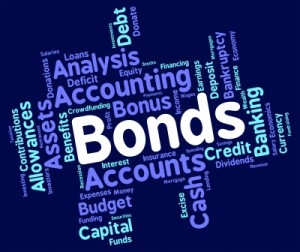 New and low-risk investors are understandably cautious about losing money. Generally, if the return of your capital is more important than the return on your capital then the appreciation of your capital will generally be lower. To put it another way, if you are willing to accept a bit more risk you might get a higher return. But that doesn’t mean that high risk always gives you a better return… sometimes it just means you lose money. The key is to weigh the probability of a high return against the risk of losing money. One way to divide investments is those that pay interest (and guarantee the return of all your principal) vs. those that may experience capital gains (or losses).
New and low-risk investors are understandably cautious about losing money. Generally, if the return of your capital is more important than the return on your capital then the appreciation of your capital will generally be lower. To put it another way, if you are willing to accept a bit more risk you might get a higher return. But that doesn’t mean that high risk always gives you a better return… sometimes it just means you lose money. The key is to weigh the probability of a high return against the risk of losing money. One way to divide investments is those that pay interest (and guarantee the return of all your principal) vs. those that may experience capital gains (or losses).
If the return of your money is critical here are several low risk interest bearing investment vehicles.
Treasury Bills and Bonds
Treasury Bonds are securities that have a stated interest rate that is paid semi-annually until maturity. Treasury bills are short-term securities that typically mature in less than one year with 4, 13, 26, and 52 week bills available. Being “short-term” and backed by the government they are considered to be very low risk investments. But they do have one very unusual feature. They do not pay interest, instead they are sold at a discount to face value through auctions. They can be purchased through banks, brokers, or the Department of Treasury’s website. The “discount” is how you make money on the T-Bill. So if you purchased a $100 T-Bill at a 3% discount you would pay $97 for it and then at maturity the government would pay you $100 thus giving you your 3% rate of return.
Certificate of Deposit
Certificates of Deposit (CDs) are generally available from banks and are a terrific tool to use when saving for a major purchase such as a car or a house down payment. CDs generally pay a higher interest rate than a savings account. However, they are less liquid than a typical savings account. CDs are available with three month terms or long terms up to 10 years. Generally, you will be charged a penalty if you withdraw your money before maturity.
Savings Bond
There are two primary types of savings bonds: I and EE bonds. I bonds are actually inflation indexed bonds with changeable interest rates. In fact, the interest rate usually changes every 6 months. If inflation is on the rise, then “I- bonds” can be a good investment. They are redeemable after one year and generally pay between three to four percent annual interest above the inflation rate. On the other hand, EE bonds are fixed rate bonds that guarantee a set rate of interest for 30 years (although EE bonds purchased between May 1997 and April 30, 2005, earn a variable rate of interest). Interest is added to an EE bond monthly and paid when you cash the bond.
FDIC Insured Savings and Checking Accounts
An FDIC insured checking account is one of the most liquid investments available today. The FDIC covers all types of deposit accounts, including, savings, checking, and money market. FDIC insurance guarantees savings account up to 250,000 dollars. Most checking accounts allow unlimited withdrawals but may charge a fee above a certain number. Savings accounts on the other hand generally allow three to six withdrawals a month but offer a higher interest rate than checking accounts. Money market accounts pay slightly higher interest rates than savings accounts, but require a higher balance to open and may require a minimum monthly balance as well.
Protected Mortgages
On the other end of the spectrum are mortgage investments from places like Jakob Pek Fund. These are reserved for “accredited investors” i.e. those with a net worth of $1 million or more. The fund accepts investments from accredited investors and loans it to other accredited investors who use the money to purchase real estate. The advantage to investing in one of these types of funds is that they pay much higher interest rates than you would be able to receive from other interest based investments.
To recap, there are a variety of interest type investment available for investors with low tolerance for risk. These include treasury bills, CDs, saving bonds and savings accounts. Protected mortgages are a possibility for accredited investors.
Image courtesy of: Stuart Miles @ FreeDigitalPhotos.net


